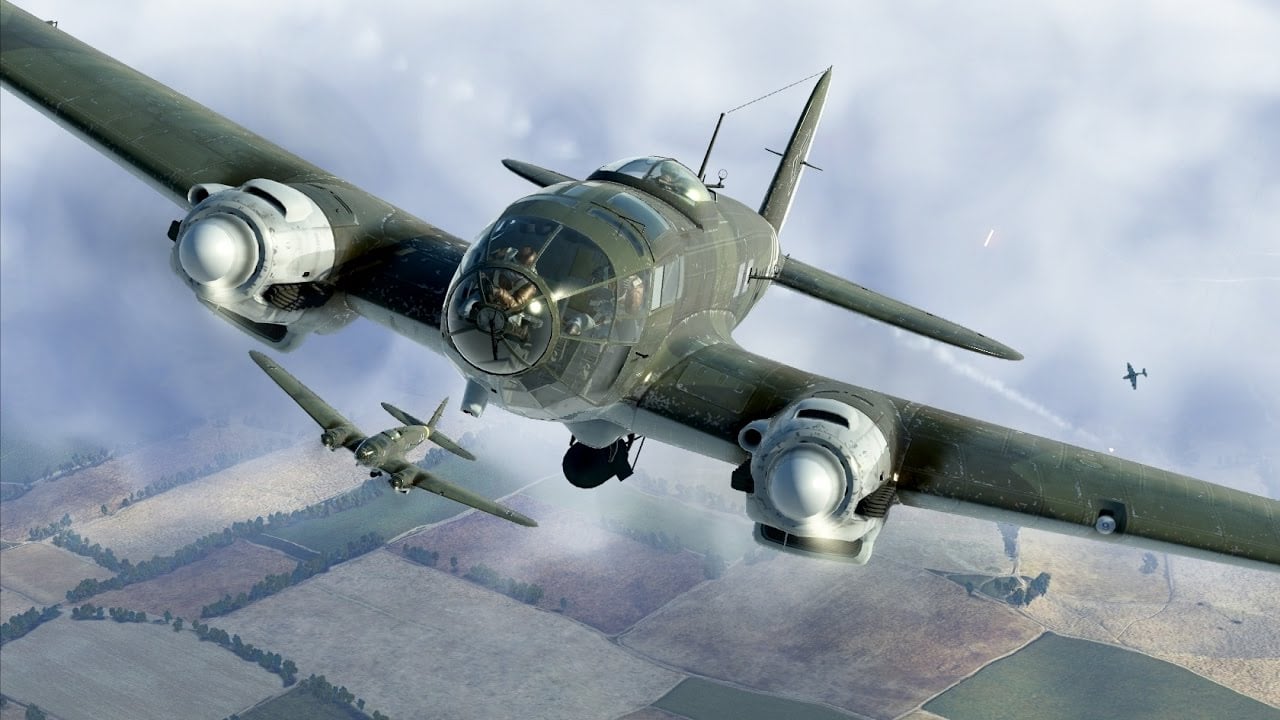On the winning side of the Battle of Britain, the Supermarine Spitfire is undoubtedly the most iconic warplane to have participated in the British victory, though as I pointed out in a separate 19FortyFive article, the Hawker Hurricane all too often gets short shrift. Meanwhile, on the losing side, the Heinkel He-111 medium bomber was arguably the Luftwaffe’s best-recognized bomber not only for that particular battle but for WWII as a whole; and though it was on the losing side of the battle and the war alike, the Heinkel still wrought plenty of devastation along the way.
Heinkel He-111 Early History & Specifications
The He-111 made her maiden flight in prototype form on 17 November 1934 and was officially introduced into the operational service of the Third Reich later the following year. The plane was manufactured by Heinkel Flugzeugwerke, a German aircraft manufacturer founded by Dr. Ernst Heinkel in 1922 and which also produced the Heinkel He 178 – the world’s first turbojet-powered aircraft – and the Heinkel He 176 – the first rocket aircraft – before eventually going defunct in 1965.
Ironically, Herr Doktor Heinkel initially envisioned and designed the plane as the world’s fastest passenger aircraft, intended to one-up the American-made Lockheed Model 9 Orion. It started off as Heinkel He 70 “Blitz” (“Lightning”), and that caught the attention of the Luftwaffe, which selected the aircraft to be converted into a medium bomber. Thus, the He-111 was born, with 7,600 of various modifications eventually built, making it the second most heavily built German bomber of WWII.
Specifications included a fuselage length of 53 feet 9.5 inches, a wingspan of 74 feet 2 inches, a height of 13 feet 1.5 inches, an empty weight of 19,136 pounds, and a maximum takeoff weight of 30,864 pounds, and a crew of 5 (pilot, navigator/bombardier/nose gunner, ventral gunner, dorsal gunner/radio operator, side gunner). Max airspeed was 273 miles per hour with a range of 1,429 miles and a service ceiling of 21,330 feet.
Armament consisted of 7 × 7.92 mm MG-15 or MG81 machine guns, (2 in the nose, 1 in the dorsal, 2 on the side, 2 ventral) and 4,400 lbs. of bombs in the internal bomb bay.
Real-World Battle Performance
The He-111 was first “blooded” in combat, not in the Second World War, but rather during the Spanish Civil War, more specifically during the Battle of Guadalajara on 9 March 1937; therein, four He 111Bs attached to the German Condor Legion — ostensibly a German volunteer unit supporting Francisco Franco’s Nationalist forces – bombed Republican airfields. In spite of the Heinkel crews’ efforts, the Republican forces won that particular battle…but eventually lost the war. Fast-forward to the start of WWII in September 1939, and the He 111s formed the backbone of the Luftwaffe’s component of the blitzkrieg (“lightning war”) against Poland, though arguably the Junkers Ju-87 Stuka dive bombers gained more notoriety from that battle.
The following year, He-111s conducted raids against British shipping in the North Sea, supported the invasions of Denmark and Norway, followed by the Battle of France. Then of course came the Battle of Britain. As noted by military historian Kennedy Hickman:
“Commencing in July, the assault on Britain saw the He 111 encounter fierce resistance from Royal Air Force Hawker Hurricanes and Supermarine Spitfires. The early phases of the battle showed a need for the bomber to have a fighter escort and revealed a vulnerability to head-on attacks due to the He 111’s glazed nose. In addition, repeated engagements with British fighters showed that the defensive armament was still inadequate.”
These vulnerabilities were dramatized in the 1969 motion picture The Battle of Britain which featured an all-star cast including Laurence Olivier, Michael Caine, Christopher Plummer, and Robert Shaw.
He 111s would also see combat over North Africa and the Eastern Front, but after 1943, the Luftwaffe’s loss of air superiority and the aforementioned defensive inadequacies saw the warbird relegated to a transport role.
Where Are They Now?
Production of the bomber ceased in 1944, and though, not surprisingly, the Luftwaffe’s use of the plane ended with Nazi Germany’s capitulation in 1945, it remained in service with Spain until 1958. A total of five survive today: at the RAF Museum in the Hendon section of London; the Royal Norwegian Air Force Museum at Gardermoen; Museo del Aire, Madrid, Spain; the Kent Battle of Britain Museum; and an He 111-H2 salvaged from the Norwegian lake of Jonsvatnet and sent to Der Deutschland for restoration.
Christian D. Orr is a former Air Force Security Forces officer, Federal law enforcement officer, and private military contractor (with assignments worked in Iraq, the United Arab Emirates, Kosovo, Japan, Germany, and the Pentagon). Chris holds a B.A. in International Relations from the University of Southern California (USC) and an M.A. in Intelligence Studies (concentration in Terrorism Studies) from American Military University (AMU). He has also been published in The Daily Torch and The Journal of Intelligence and Cyber Security. Last but not least, he is a Companion of the Order of the Naval Order of the United States (NOUS). In his spare time, he enjoys shooting, dining out, cigars, Irish and British pubs, travel, USC Trojans college football, and Washington DC professional sports. If you’d like to pick his brain in-person about his writings, chances are you’ll be able to find him at the Green Turtle Pasadena in Maryland on Friday nights, singing his favorite karaoke tunes.

